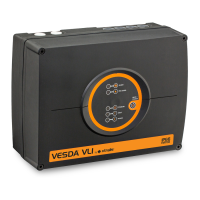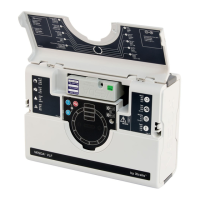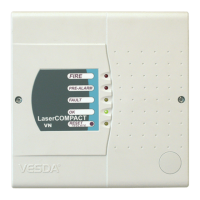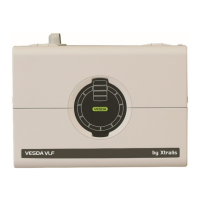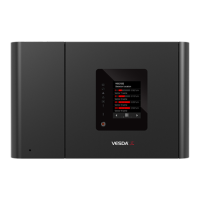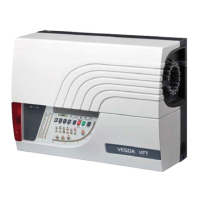VESDA by Xtralis VESDAVLSProduct Guide
www.xtralis.com 31
8 Backup Battery Power
The power supply for the VESDA VLS is switched to a back up battery in the event of a mains power supply
disruption. The size of the back up battery is determined by local standards and codes, the total power
required by the system, back up time required, allowance for reduction in capacity with age and expected
temperature variations.
Note: It is recommended that batteries be inspected and changed as per manufacturer's specifications or
as per your local codes and standards.
8.1 Backup battery size calculation sheet
Normal Load @ 24 VDC Full alarm load @ 24 VDC
Equipment Load mA Number Total Load mA Number Total
Detector @ 3000rpm 240 290
Detector @ 3500rpm 280 330
Detector @ 4000rpm 350 400
Detector @ 4200rpm 400 500
Integral Display 60 80
Integral Programmer
20
(backlight off)
80
(backlight off)
Remote Display 7 relays
(VRT-400)
90 110
Remote Display 12
relays (VRT-800)
110 240
Remote Programmer
(VRT-100)
50
(backlight off)
110
(backlight on)
Hand-held Programmer
(VHH-100)
50
(backlight off)
110
(backlight on)
System Relay Module
(VRT-S07)
60 105
Remote termination card
- 7 relays (VRT-500)
60 105
Other 24 V loads
Total mA Total mA
Standby hours Alarm hours
Standby capacity Alarm capacity
Total capacity = Standby
+ Alarm capacity
Divided by 1000 for standby capacity
Multiplied by battery factor (Normally 1.25)
Table 8-1: Calculating the size of backup battery
Note: If intelligent VESDA power supply is fitted it will report power failures (F15) on VESDAnet. VESDA
VLP & VLS with GPI terminals connected will maintain their aspirator speed for an hour after the
loss of mains power. After which, the aspirator speed will be limited to 3000 rpm to conserve power.
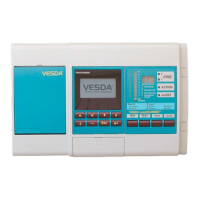
